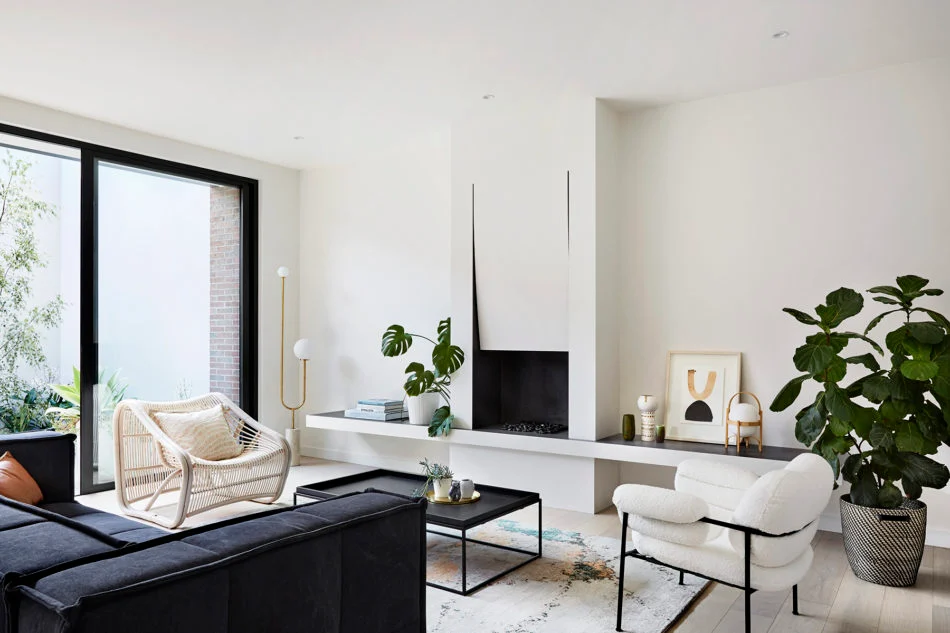In a world overloaded with choices, colors, and noise, minimalist interior design offers a quiet rebellion—a chance to return to simplicity. This design philosophy isn’t just about removing items from a room; it’s about creating space for what matters. Minimalist interiors are calm, focused, and purposeful, embodying the art of less being infinitely more.
What Is Minimalist Interior Design?
Minimalist interior design is rooted in the idea that beauty exists in simplicity. It values clarity, balance, and intentionality, often defined by clean lines, neutral colors, and uncluttered spaces. The core principle is simple: reduce visual noise to highlight what’s essential.
Emerging from post-World War II modernism and inspired by Japanese Zen philosophy, minimalism evolved as a way to find harmony through reduction. Its rise in popularity today mirrors our collective yearning for mental space in an overstimulated world.
Key Elements of a Minimalist Interior
At the heart of minimalism lies the ability to evoke emotion and function through restraint. Neutral color palettes dominate—soft whites, warm beiges, gentle greys. These hues invite tranquility, allowing the mind to rest.
Furniture is chosen not for excess but for necessity and beauty. Each piece earns its place in the room by offering both form and function. Think of a sleek armchair that is as comfortable as it is elegant, or a wooden dining table that doubles as a workspace without overwhelming the space.
The architecture of a minimalist room emphasizes clean lines and uncluttered geometry. Light—especially natural light—is not just welcome but essential. It fills the room, bouncing gently off pale walls and open spaces, making everything feel more expansive and grounded.
Benefits of Minimalist Living Spaces

Living in a minimalist space brings more than aesthetic satisfaction; it offers tangible lifestyle benefits. The mind is less distracted when there’s less visual chaos, creating a sense of calm and clarity. Mental space expands when physical clutter shrinks.
Minimalist homes are also easier to maintain. Fewer objects mean less dust, less cleaning, and more time to spend on things that matter. And from an environmental perspective, minimalism encourages conscious consumption—buying fewer but higher-quality items, often made sustainably.
How to Create a Minimalist Interior at Home
The first step toward a minimalist space isn’t shopping—it’s editing. Take a hard look at your belongings and let go of what no longer serves a purpose or brings joy. It’s a mindset shift from owning more to curating better.
Furniture should serve multiple roles when possible. A storage ottoman, for example, can act as seating, a table, and a hidden compartment. Avoid over-decorating; instead, focus on spacing. Negative space isn’t empty—it’s full of intention. It gives the eye room to rest and the space room to breathe.
To avoid coldness, embrace texture. Materials like raw wood, soft linen, and matte ceramics add warmth and subtle character. These elements prevent minimalism from feeling stark and transform it into something deeply inviting.
Common Mistakes to Avoid in Minimalist Design
A common pitfall is confusing minimalism with sterility. White walls and sparse furniture can easily become lifeless if not thoughtfully executed. Minimalism should still feel lived-in and human, not like an art gallery devoid of soul.
Another misstep is removing all personality. Minimalist doesn’t mean erasing your identity. A single framed photograph, a favorite book on the coffee table, or a handmade vase can say more about you than a cluttered shelf ever could. It’s not about erasing character—it’s about highlighting it.
Minimalist Interior Inspiration by Room
Every room in the home offers unique opportunities to embrace minimalist design. In the living room, focus on spacious seating and natural light. Keep surfaces mostly clear but let one or two meaningful objects anchor the room.
In the bedroom, reduce distractions. A bed with clean linens, a nightstand with only a lamp and a book, and the absence of electronics can help foster restful sleep. Kitchens and bathrooms can remain highly functional while still appearing serene, especially when open shelving and hidden storage are combined.
Even small touches—like matching containers or streamlined faucets—can transform utilitarian areas into minimal works of art.
Minimalism for Small Spaces and Apartments

Minimalist principles are especially effective in small living environments. In fact, the style was born out of limited space in urban dwellings. By using furniture that serves multiple purposes and allowing natural light to flood the area, even the smallest apartment can feel spacious.
Color choices matter greatly in tight quarters. Pale shades reflect light, creating the illusion of openness. Floor-to-ceiling curtains and floating shelves further maximize vertical space without crowding the room.
Minimalist Interior Design and Modern Lifestyles
Minimalism aligns beautifully with modern life. In an era of remote work, a clean and minimal home office can significantly increase focus and productivity. A neutral space with a sturdy desk and ergonomic chair avoids distractions while promoting efficiency.
Technology and minimalism also coexist harmoniously. Smart home devices with hidden wiring and voice control eliminate visual clutter while adding convenience. Hidden speakers, under-cabinet lighting, and wireless charging stations all support a minimalist lifestyle while enhancing modern living.
Final Thoughts: Finding Peace in Simplicity
Minimalist interior design isn’t a trend—it’s a mindset. It invites us to reconsider what we truly need and challenges the idea that more is better. At its best, minimalism offers a life of clarity, peace, and elegance.
Simplicity isn’t empty. It’s full of purpose.

